This piece is part of a series titled “Nonstate armed actors and illicit economies in 2023” from Brookings’s Initiative on Nonstate Armed Actors.
Afghanistan in 2023 will be shaped by whether or not the Taliban’s supreme leader, Haibatullah Akhundzada, retains his tight grip on all decisionmaking. The second crucial dynamic will be terrorism and militancy. The Taliban is unlikely to get a better handle on the Islamic State in Khorasan (ISK). But the feeble National Resistance Front (NRF) and other groups seeking to restore the Afghan Republic will not seriously threaten the Taliban’s rule. Two questions remain: Can the Taliban prevent significant defections? And can it contain terrorism emanating from Afghanistan, so external powers stay reluctant to support anti-Taliban groups?
Key 2022 developments
Over the past year, the Taliban’s rule progressively hardened and became more authoritarian and dogmatically 1990s-like.
The Taliban’s exclusionary Pashtun-centered rule has turned highly repressive toward all forms of opposition. At the national level, it provides few job opportunities, let alone decisionmaking roles, for minorities and those associated with the fallen Afghan Republic.
Individual rights have been eviscerated, and women’s access to education, jobs, and even the public sphere for travel and medical care has been decimated.
The General Directorate of Intelligence (GDI) under Sirajuddin “Siraj” Haqqani’s Ministry of Interior, and the Ministry of the Promotion of Virtue and Prevention of Vice, have become principal tools of repression.
Repeating the Republic’s mistakes and reversing the Taliban’s prior more decentralized processes, Taliban decisionmaking has become concentrated in the hands of a few – Amir Haibatullah and his Kandahar-based clique.
With nearly absolute power, Haibatullah has repeatedly dismissed input from other Taliban factions, especially more pragmatic, internationally oriented Taliban leaders. The more the West has criticized decisions to strip girls and women of rights or demanded inclusive rule, the more Haibatullah and his Kandahar acolytes have felt vindicated, interlocutors in Afghanistan tell me. Haibatullah has also been impervious to the criticism of other Islamic countries, organizations, and even conversative scholars. He has defined his version of sharia as the only true interpretation of Hanafi Islam.
His December 2022 edict banning women from working for NGOs in Afghanistan, with the excuse that they have been inadequately covered, has had devastating consequences. Along with U.N. agencies, the NGOs have provided vital aid to a starving country. Female workers are the only ones who can access women and often their children.
After the ban, major international NGOs suspended all of their Afghanistan operations – both because their operational capacity was critically hampered and because they hoped the suspension would force the Taliban to reverse the decision. Ultimately, both blinked. The Taliban announced that the ban was not meant to apply to women working in healthcare and education, and the NGOs restored some of their services.
Even so, the humanitarian situation remains excruciating: Almost half of the Afghan population was projected to be acutely food insecure between November 2022 and March 2023, with 6 million on the brink of famine. More than a quarter of Afghanistan’s roughly 40 million people have been receiving food packets and cash stipends from the World Food Program.
To some extent, the Taliban has stabilized the Afghan economy, crushed by banking sanctions, international seizures of Afghan central bank assets, and the end of Western development aid. It firmed up the Afghan currency, reduced inflation, partially recovered imports, doubled exports, and collected customs and taxes far more successfully than the corrupt leaders of the Afghan Republic. But as development economist William Byrd aptly puts it, the stabilization is one of a “famine equilibrium.”
The intensifying repression of women, minorities, and political critics fundamentally jeopardizes even essential Western humanitarian aid. There is little prospect that any future Chinese economic efforts in Afghanistan, very limited as they have been, could compensate for the loss of Western aid. Yet Haibatullah and his Kandahar clique define life on earth, including mass suffering and death, as merely a step toward the afterlife and feel self-justified in their dogma regardless of the humanitarian and economic consequences.
Power change scenarios
Other Taliban leaders, however, do not operate according to the same calculus. They want to retain control of Afghanistan for a long time and calculate they won’t be able to do so if the economy altogether buckles, international isolation intensifies, and foreign resources dry up. They include the more internationally-oriented segments of the Taliban – the faces of Taliban diplomacy such as Acting First Deputy Prime Minister Mullah Abdul Ghani Baradar, and some very powerful military commanders with potent networks and influence, including Acting Minister of Defense Mullah Yaqub, son of the Taliban 1990s leader Mullah Omar, and Acting Minister of Interior Sirajuddin Haqqani.
Privately, Afghan interlocutors and Western officials have told me that these leaders and other Taliban officials have repeatedly sought to persuade Haibatullah to rescind the bans of girls’ education and women’s employment and other controversial policies. Yet in audience after audience with Haibatullah, they were dismissed. Although chosen in 2016 by the Taliban shura for his assumed weakness in decisionmaking, in addition to his religious credentials, Haibatullah has ruled with an iron fist. Clinging to or rescinding the edicts is, thus, also a matter of an internal power struggle.
Can a power change take place within the Taliban to constrain or remove Haibatullah in 2023?
Orchestrating an obvious internal putsch is enormously risky – entailing the possible execution of its organizers and Taliban splintering. A putsch would require basic unity of action between Baradar, Siraj, and Yaqub – none of whom trust each other – and the co-opting of several other key Taliban military commanders. Today, the likelihood is still small.
A far less risky power change, apparently currently sought by the dissatisfied Taliban leaders, but still difficult to achieve, would reinstate the Rahbari Shura (the prior leadership council arrangement) whereby decisions would be reached by consensus within the shura and then approved by the amir, Haibatullah. But Haibatullah shows no inclination to disempower himself.
The U.S. agreement to release from prison the prominent Afghan drug trafficker Bashir Noorzai and exchange him for an American hostage augments the possibility of an internal power change. Bashir has a large standing in the same important tribal networks as Haibatullah and influence within the Taliban. His support for a leadership reshuffle would add legitimacy and heft to such a move.
An external assassination of Haibatullah may produce a counterproductive tightening around rigid policies, even by the Taliban commanders who don’t actually favor them, due to their inescapable need to demonstrate loyalty. The 2016 U.S. assassination of the former Taliban leader Mullah Mansour was a strategic blunder.
Uncertainties also surround the Taliban leadership succession. Baradar has important internal credentials, but lacks a military power-base and would be strongly opposed by Pakistan. Despite Pakistan’s dissatisfaction with Siraj’s inability and unwillingness to constrain Tehrik-e-Taliban Pakistan (TTP) from intensifying terrorist attacks in Pakistan, including against Pakistani intelligence targets, Siraj remains Pakistan’s principal Afghan asset. But the Kandahari Taliban, including Yaqub and Baradar, do not want him as a new amir. Yaqub’s rise to power would be a hard pill for the West to swallow, but perhaps easier than living with Haibatullah.
Internal Militancy, External Terrorism
As I detailed in August 2022, since the Taliban takeover, terrorists from across the Middle East, Central Asia, and Pakistan have flocked to Afghanistan, some apparently paid by regional governments, as Western officials have privately told me.
In a stunning display of hubris, Siraj allowed al-Qaida’s leader Ayman al-Zawahiri to relocate to and live in a central Kabul safehouse – where a U.S. drone strike killed him.
Because of its jihadi credentials, political debts, and need to fundraise abroad, the Taliban was never likely to sever relations with other terrorist groups. All along, the issue at stake has been whether the Taliban would prevent terrorist groups based in Afghanistan from conducting attacks abroad. Apart from the TTP, such attacks have not taken place, and the Taliban mounted a modicum of effort to appease international actors, such as China by relocating Uyghur militants away from the Afghanistan-China border.
But the Taliban has badly struggled to contain the urban terror campaign of its arch-rival, the Islamic State in Khorasan. ISK seeks to ignite a sectarian war in Afghanistan, splinter the Taliban, and cut its external economic resources. It has thus attacked Chinese and Russian assets in Kabul.
The question is: If terrorist attacks by ISK or other Afghanistan-linked groups do take place abroad in 2023, will external actors start providing robust material support to other anti-Taliban armed actors?
The most visible among them, the National Resistance Front, remains weak and lacks tribal support. Its anti-Taliban strikes have so far caused the Taliban only minor irritation.
A real challenge to the Taliban’s power would emerge if significant Taliban factions split off – as a result of a putsch or frustration with the collapsed economy and a steep decline in particular factions’ income, compounded by an eventual firm implementation of the amir’s drug ban.
But in any renewed civil war, the NRF stands little chance of winning. Rather, various Taliban factions and the ISK would carve up Afghanistan.
The Brookings Institution is committed to quality, independence, and impact.
We are supported by a diverse array of funders. In line with our values and policies, each Brookings publication represents the sole views of its author(s).

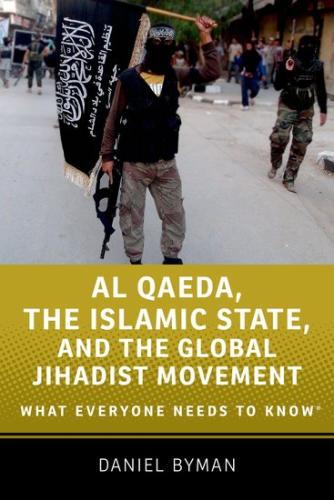

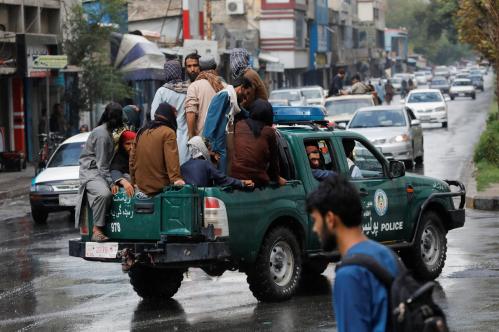
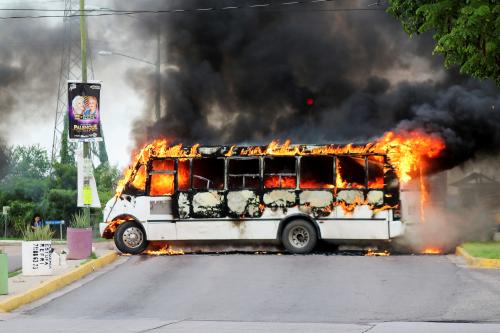
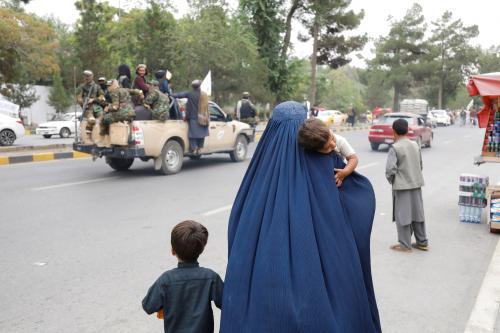

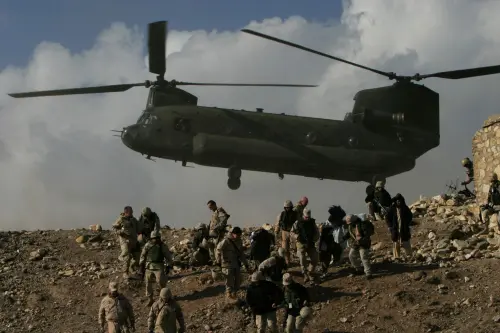
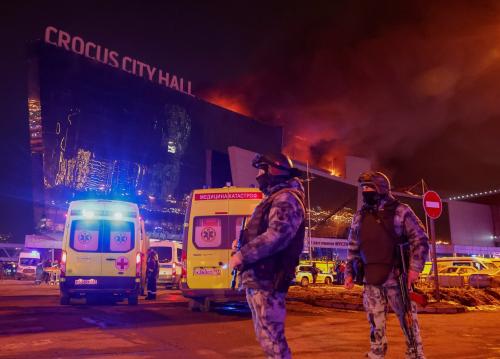
Commentary
Afghanistan in 2023: Taliban internal power struggles and militancy
February 3, 2023